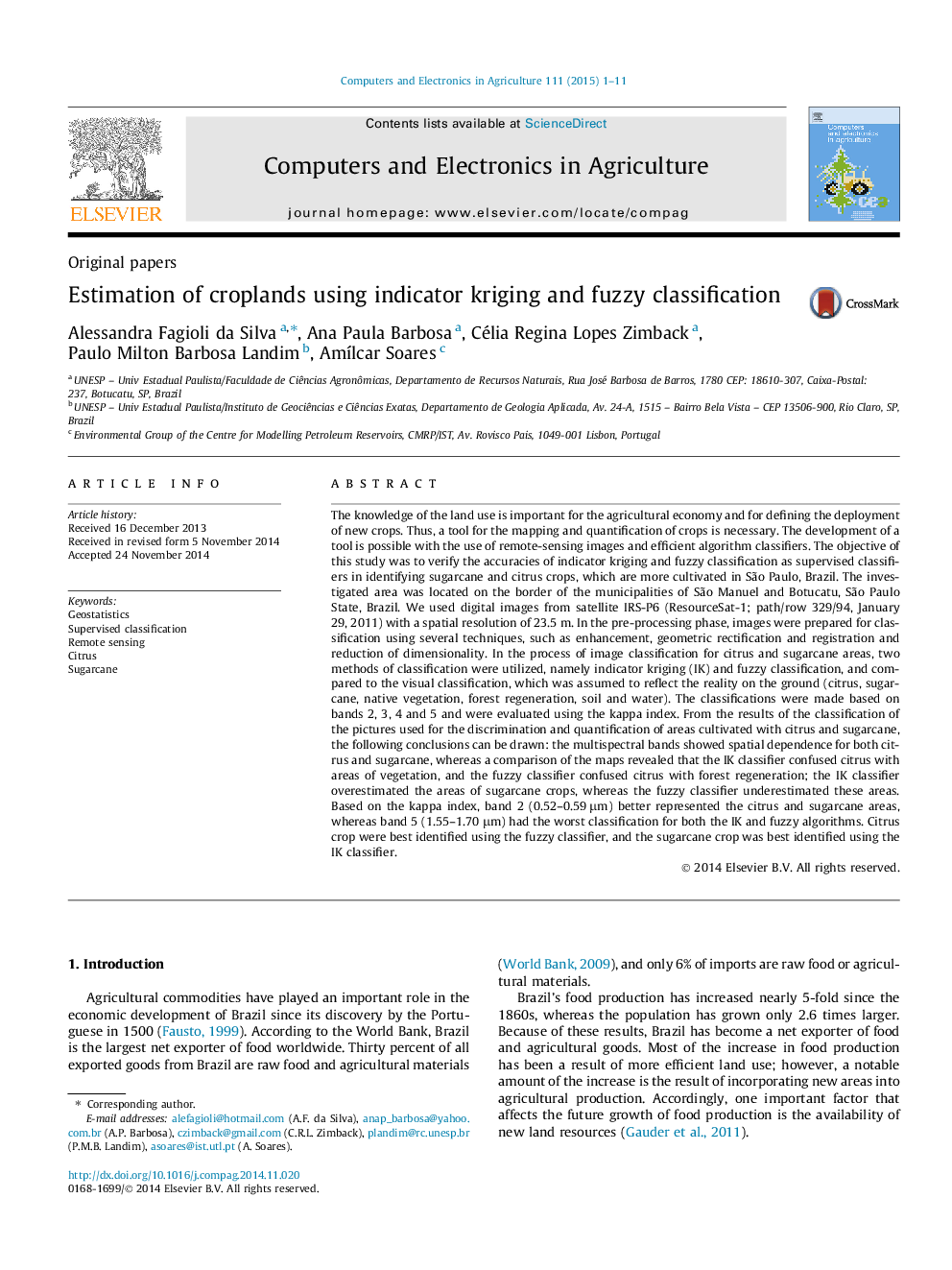| Article ID | Journal | Published Year | Pages | File Type |
|---|---|---|---|---|
| 6540845 | Computers and Electronics in Agriculture | 2015 | 11 Pages |
Abstract
The knowledge of the land use is important for the agricultural economy and for defining the deployment of new crops. Thus, a tool for the mapping and quantification of crops is necessary. The development of a tool is possible with the use of remote-sensing images and efficient algorithm classifiers. The objective of this study was to verify the accuracies of indicator kriging and fuzzy classification as supervised classifiers in identifying sugarcane and citrus crops, which are more cultivated in São Paulo, Brazil. The investigated area was located on the border of the municipalities of São Manuel and Botucatu, São Paulo State, Brazil. We used digital images from satellite IRS-P6 (ResourceSat-1; path/row 329/94, January 29, 2011) with a spatial resolution of 23.5 m. In the pre-processing phase, images were prepared for classification using several techniques, such as enhancement, geometric rectification and registration and reduction of dimensionality. In the process of image classification for citrus and sugarcane areas, two methods of classification were utilized, namely indicator kriging (IK) and fuzzy classification, and compared to the visual classification, which was assumed to reflect the reality on the ground (citrus, sugarcane, native vegetation, forest regeneration, soil and water). The classifications were made based on bands 2, 3, 4 and 5 and were evaluated using the kappa index. From the results of the classification of the pictures used for the discrimination and quantification of areas cultivated with citrus and sugarcane, the following conclusions can be drawn: the multispectral bands showed spatial dependence for both citrus and sugarcane, whereas a comparison of the maps revealed that the IK classifier confused citrus with areas of vegetation, and the fuzzy classifier confused citrus with forest regeneration; the IK classifier overestimated the areas of sugarcane crops, whereas the fuzzy classifier underestimated these areas. Based on the kappa index, band 2 (0.52-0.59 μm) better represented the citrus and sugarcane areas, whereas band 5 (1.55-1.70 μm) had the worst classification for both the IK and fuzzy algorithms. Citrus crop were best identified using the fuzzy classifier, and the sugarcane crop was best identified using the IK classifier.
Related Topics
Physical Sciences and Engineering
Computer Science
Computer Science Applications
Authors
Alessandra Fagioli da Silva, Ana Paula Barbosa, Célia Regina Lopes Zimback, Paulo Milton Barbosa Landim, AmÃlcar Soares,
